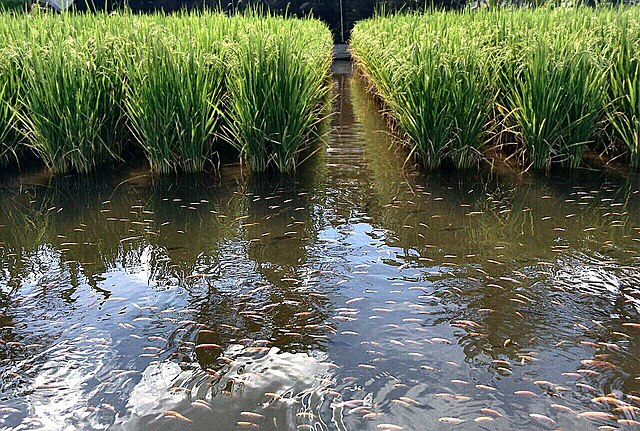A rice-fish system is a polyculture practice that integrates rice agriculture with aquaculture, most commonly with freshwater fish. It is based on a mutually beneficial relationship between rice and fish in the same agroecosystem. The system was recognized by the FAO in 2002 as one of the first Globally Important Agricultural Heritage Systems.
Rice and tilapia fish polyculture, Java
Common carp may have been the first fish in rice-fish systems.
Rice-fish farming landscape in Arunachal Pradesh, Northeast India
In agriculture, polyculture is the practice of growing more than one crop species together in the same place at the same time, in contrast to monoculture, which had become the dominant approach in developed countries by 1950. Traditional examples include the intercropping of the Three Sisters, namely maize, beans, and squashes, by indigenous peoples of Central and North America, the rice-fish systems of Asia, and the complex mixed cropping systems of Nigeria.
Pawpaw trees growing under mulberry trees, a forest gardening style of polyculture
A Central American polycultural "milpa" in 2011. Beans are growing among the drying maize; banana trees are in the background.
Excellent soil structure in land in South Dakota farmed without tillage using a crop rotation of maize, soybeans, and wheat accompanied by cover crops. The main crop has been harvested but roots of the cover crop are still visible in autumn.
Applying pesticides to crops in a monoculture: polycultures need lower inputs, reducing environmental harms.







